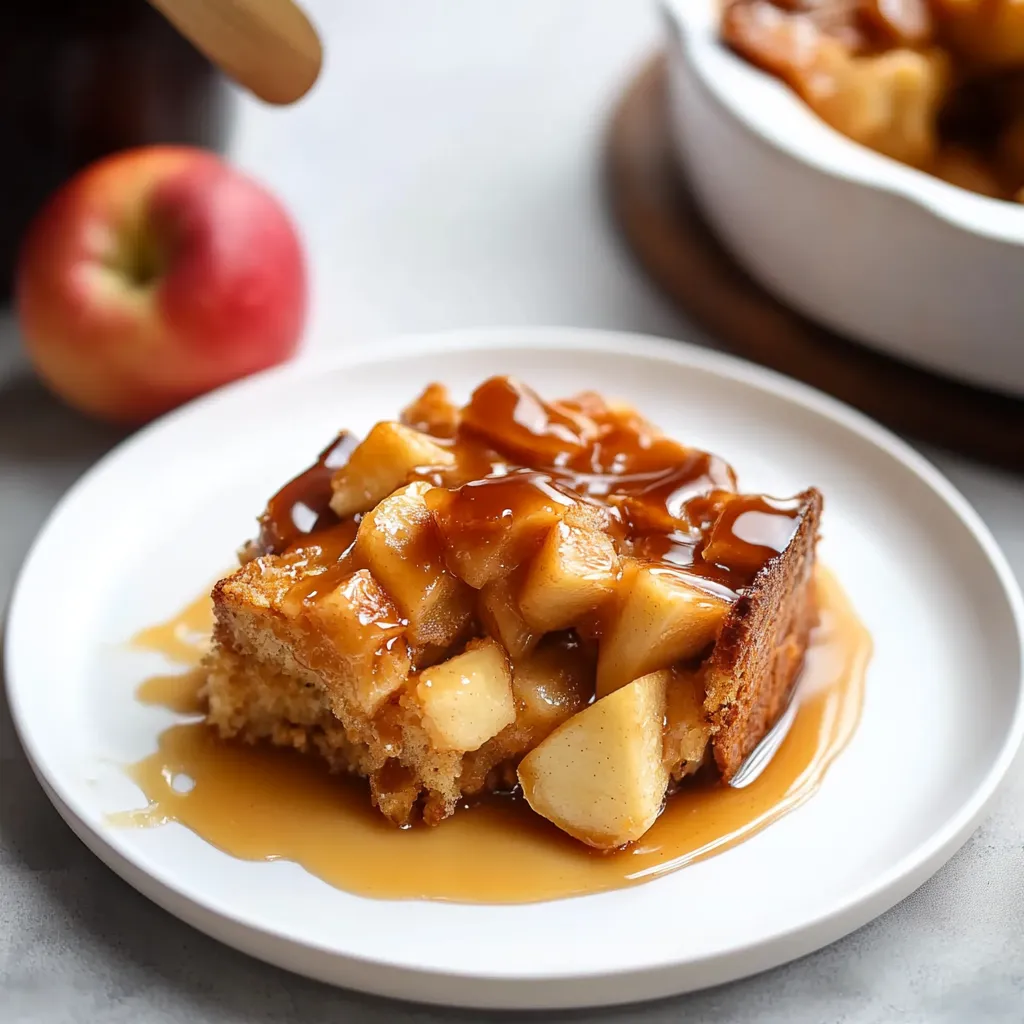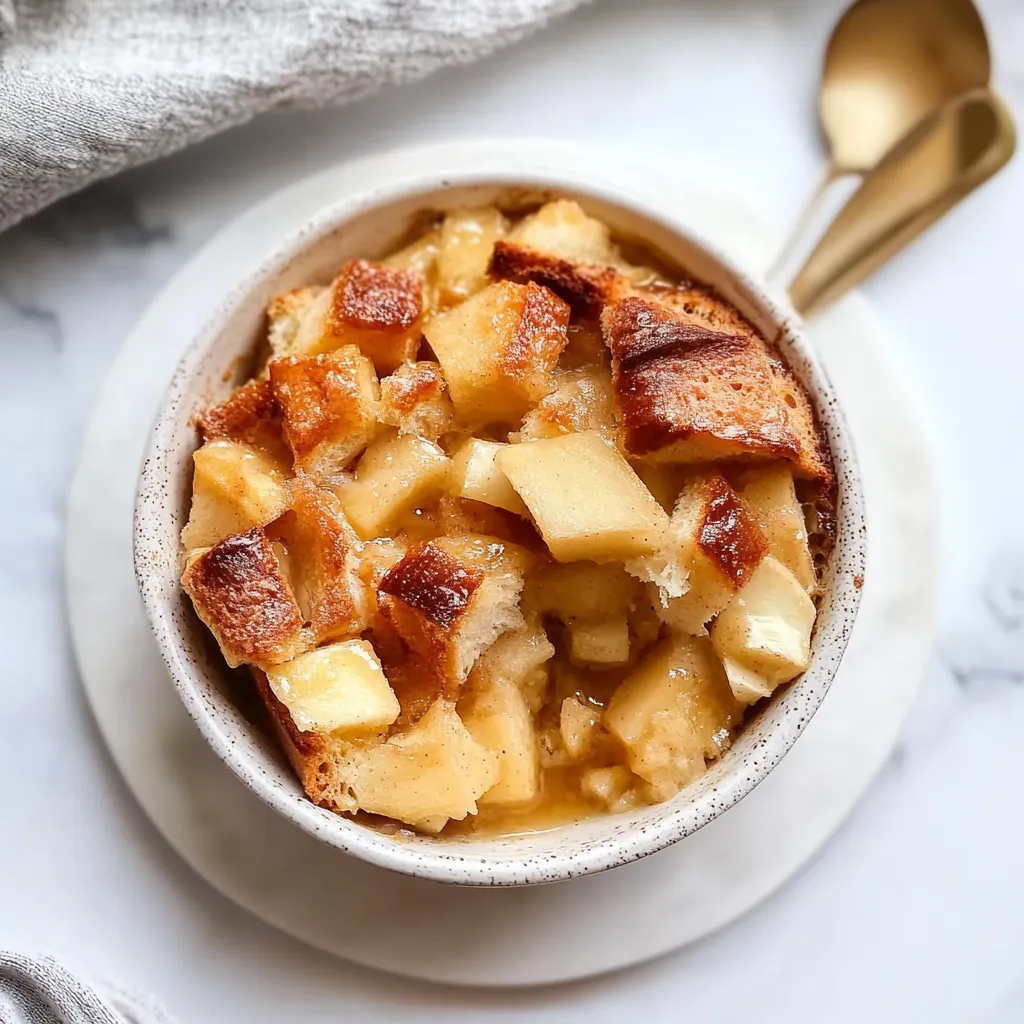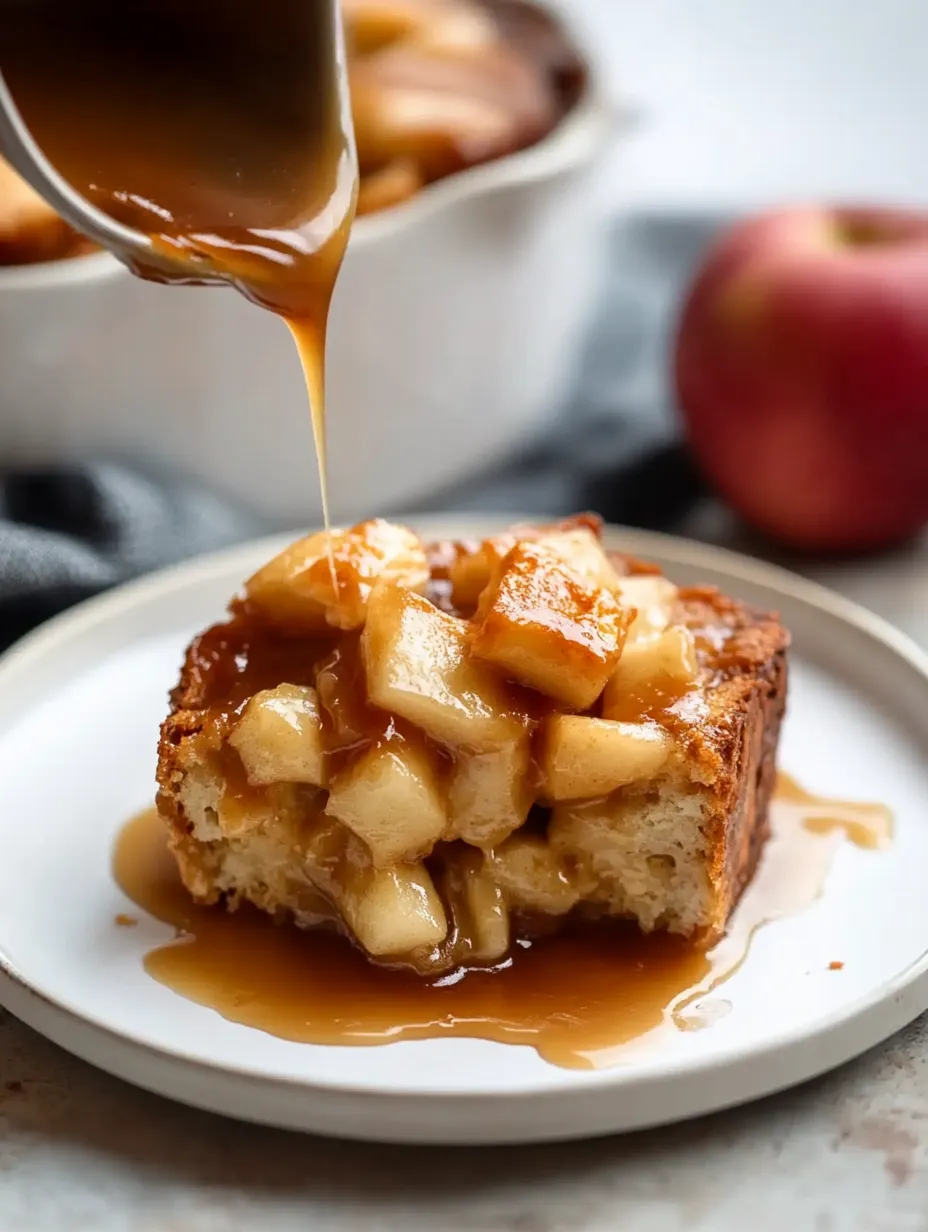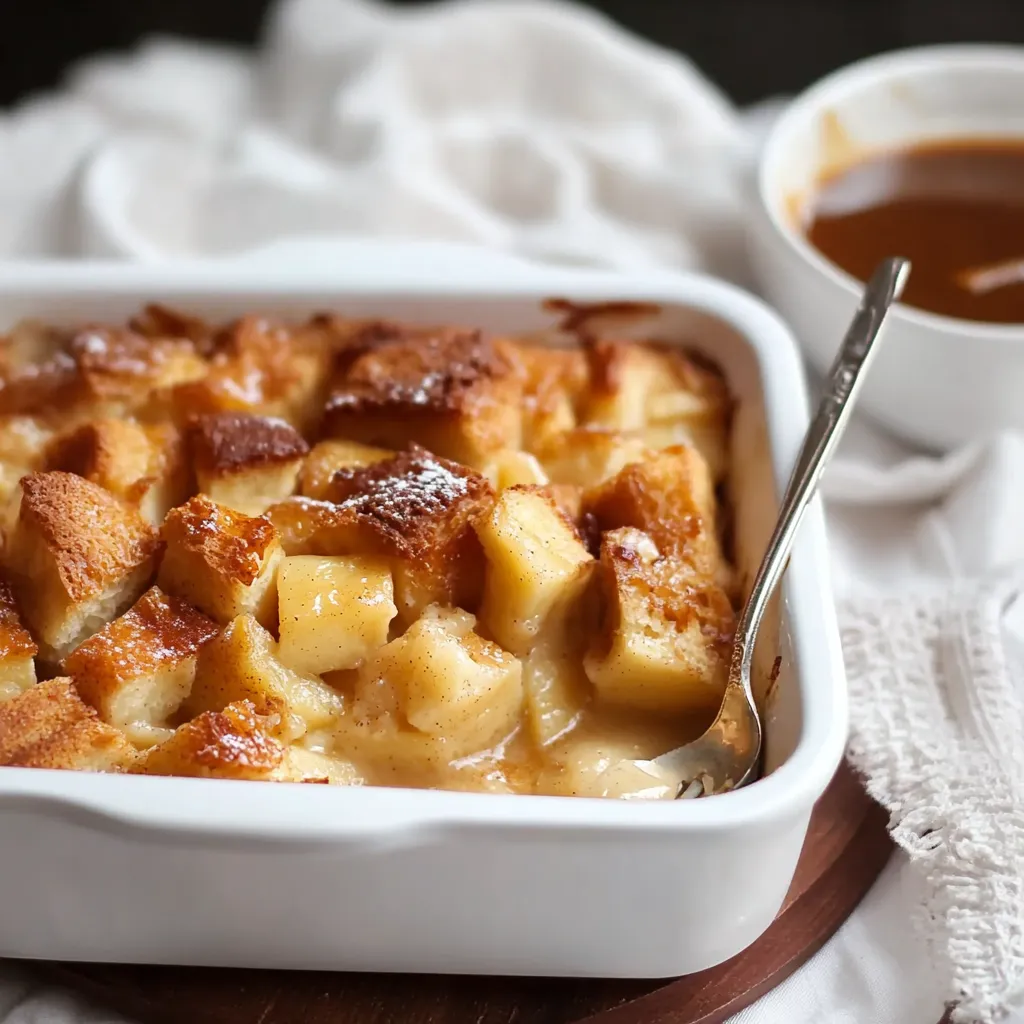 Pin it
Pin it
When warm apple-spiced bread bakes in the oven, it fills your home with a sense of warmth. After trying countless bread pudding versions over the years, I've found that the real secret isn't just what goes in, but how everything works together. From bread soaking up eggy goodness to that boozy sauce on top - each part does something special to make this dish unforgettable.
I made this for friends during our autumn get-together last week, and nobody said a word once they took their first warm, sauce-covered bites. What made it so good? I've learned how to stack flavors and nail that perfect custardy feel.
Key Ingredients and Shopping Advice
- Bread: Go for brioche or challah if you want something rich, or French bread for a bit more chew.
- Apples: Mix Honeycrisp for sweet notes and Granny Smith for tang; both keep their shape when cooked.
- Spices: Don't use old spices - freshly grated nutmeg makes all the difference.
 Pin it
Pin it
Making It From Scratch
Start by slicing your bread into one-inch cubes. If you're using bread that's still soft, lay the pieces on a baking sheet and pop them in a 200°F oven for about 15 minutes - you want them dry but not brown.
 Pin it
Pin it
Crafting Your Creamy Base
Your egg mixture needs some TLC. Use eggs that aren't cold from the fridge - they'll mix better with warm milk. Beat them well until they look pale and smooth, then slowly pour in slightly warmed milk and cream while stirring non-stop. This gentle approach keeps the eggs from cooking too soon. Mix in your sugars and spices, watching them melt into the liquid.
Letting Everything Soak
Now comes the waiting game. Put your bread chunks in a big bowl and mix in diced apples throughout. Pour your egg mixture over everything bit by bit, gently turning to coat each piece. That 15-minute soak isn't just dead time - it's when the bread drinks up all the eggy goodness, setting you up for amazing texture later.
Baking It Right
Make sure your oven is good and hot - put a rack in the middle and let it warm up for 15 minutes after it beeps ready. Pour your soaked bread mix into your greased dish, making sure apples are scattered evenly. Some bread might try to float - just push it down gently so everything's tucked into the liquid.
Whipping Up The Bourbon Drizzle
While it bakes, make the star of the show - that amazing bourbon sauce. Use good butter and melt it slowly over medium heat. Add brown sugar and keep stirring until it totally dissolves into the butter. Pour in your cream next for a smooth, silky mix. Add the bourbon after taking the pan off the heat - this keeps its flavor but cooks off the boozy kick.
Knowing When It's Done
Getting perfect bread pudding means spotting when it's just right. Look for these clues: the top should be golden and slightly puffy, and when you give the pan a little shake, the middle should wobble just a tiny bit - kind of like barely-set custard. Stick a knife in near the center - it should come out mostly clean with just a few moist bits stuck to it.
Why Waiting Matters
Those ten minutes after baking really count. The leftover heat keeps cooking the custard gently while everything firms up properly. This is also the perfect time to add your bourbon sauce - it should be warm enough to sink in a bit but not so hot it breaks down what you've created.
Where It Comes From
Bread pudding started as a thrifty dessert, helping folks use up stale bread instead of throwing it out. This fancier version, with its rich custard, fresh apples, and boozy sauce, shows how old-fashioned recipes can grow up while still giving you that same cozy feeling. It's comfort food that's been dressed up but hasn't forgotten its roots.
Changing With The Seasons
- Summer: Swap apples for fresh peaches or mixed berries.
- Autumn: Try adding wine-soaked pears or tart cranberries.
- Winter: Mix in bourbon-soaked dried fruits for richness.
- Spring: Combine tart rhubarb with sweet strawberries for brightness.
Handling Heat and Texture
- Let eggs and dairy sit out before using for smoother mixing
- Your oven must be hot before the pudding goes in for proper setting
- Watch your sauce heat closely to avoid burning the sugar
- Serve while still warm but not blazing hot for the best texture
Making Memories Around Food
This sweet treat can turn any regular night into something special. Bring it to the table in its baking dish for a laid-back feel, or serve it in individual cups for fancy dinners. Try adding a scoop of vanilla ice cream on top and watch it melt down into the warm pudding, making little creamy streams between the bread chunks.
Tools That Help
- Baking Dish: Pick one with a thick bottom for steady cooking.
- Whisk: The big balloon kind makes your custard super smooth.
- Bread Knife: Gets you neat bread chunks without squishing.
- Pot: One that heats slowly keeps your sauce from burning.
 Pin it
Pin it
Plan-Ahead Cooking Tips
One of the best things about this dessert is you can start it early. Mix the bread and custard the day before, cover it tight and stick it in the fridge overnight. Just take it out half an hour before baking so it isn't ice cold. You can even make the sauce three days ahead and warm it up with a splash of cream to make it smooth again.
Closing Thoughts
Getting bread pudding just right means understanding how heat, texture, and timing all play together. After making this countless times in my kitchen, I've learned that success isn't just about following steps, but developing a feel for how everything should look and behave as you go.
Frequently Asked Questions
- → Is there an alternative to bourbon?
- Sure! Swap it with either vanilla extract or some apple cider for the sauce.
- → Which apples should I use?
- Try tart and firm types like Granny Smith or Honeycrisp so they hold up well while baking.
- → Can I prepare this earlier?
- Yep! Make the pudding and sauce ahead of time and just reheat before eating.
- → Why toast the fresh bread?
- Toasting helps the bread soak the custard without breaking down. Stale bread doesn’t need it.
- → How can I tell when it’s ready?
- Stick a knife in the middle—the pudding’s done when it comes out clean, and the top is golden.
